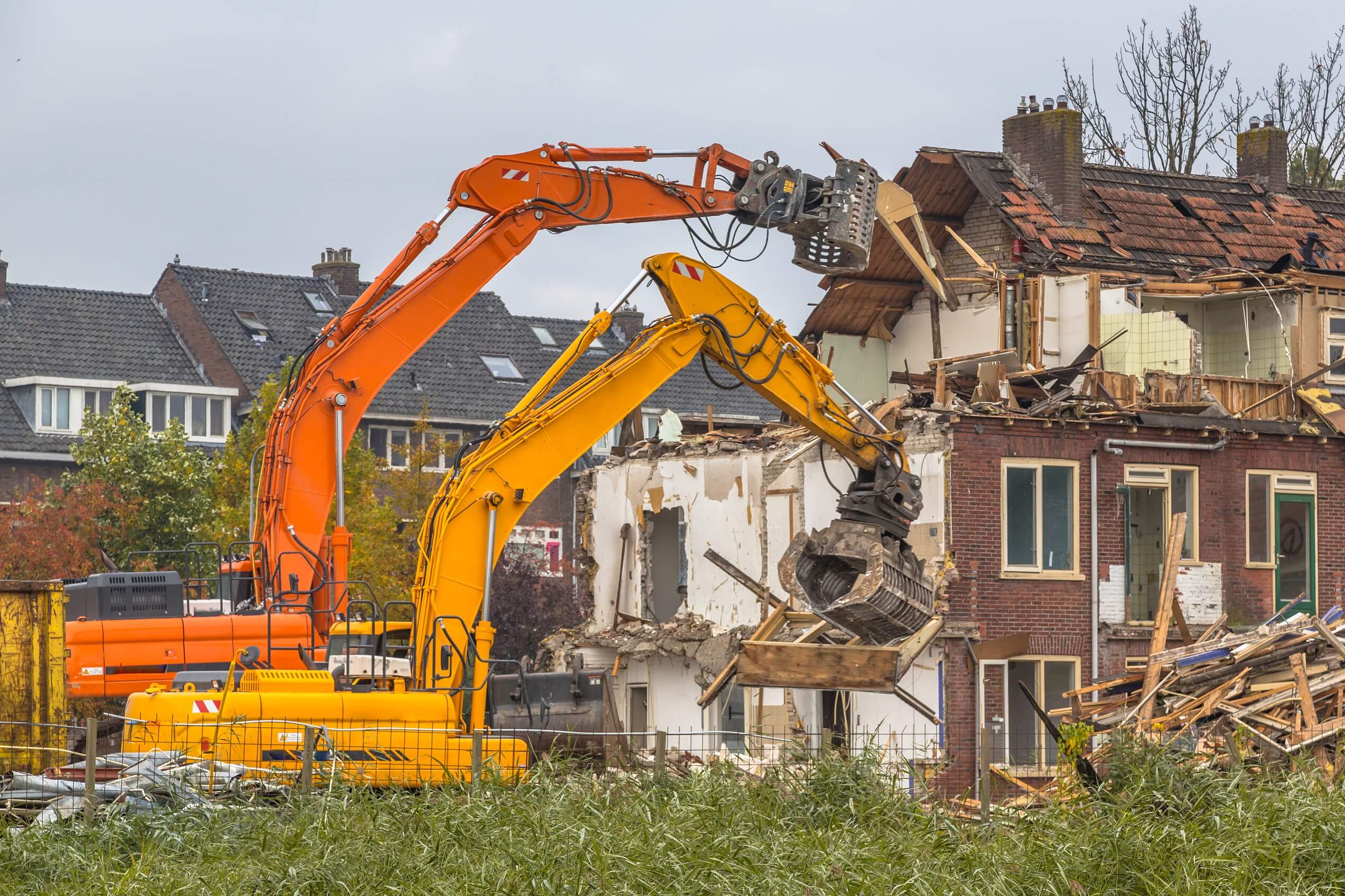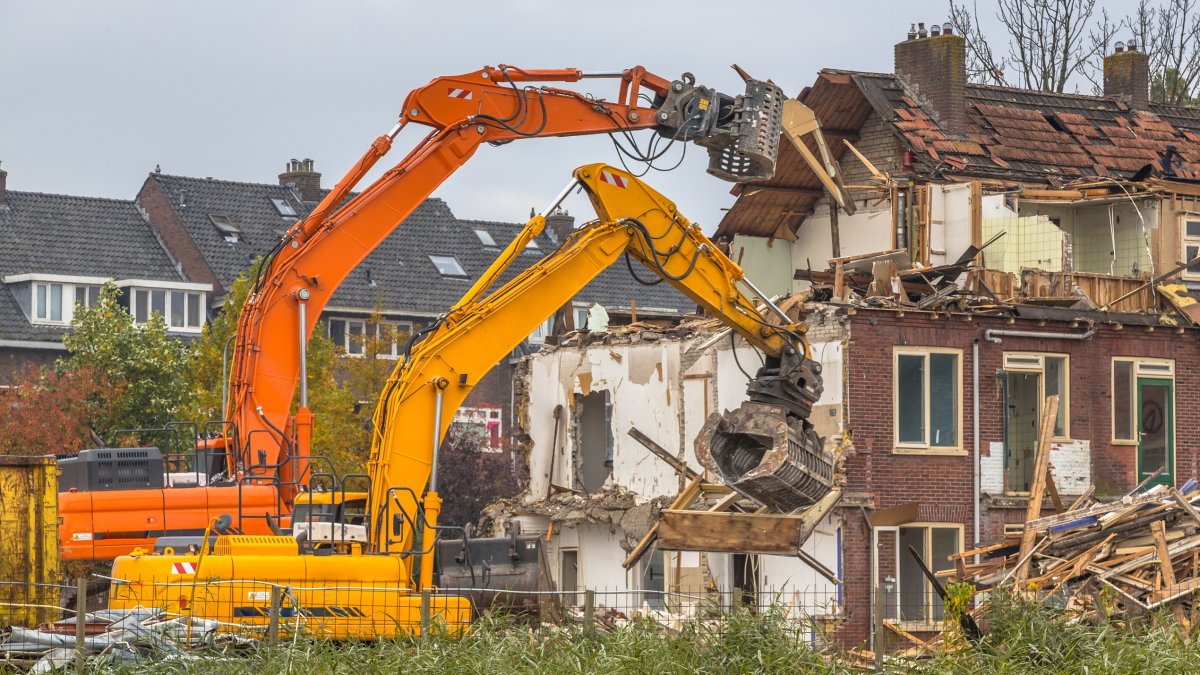
House demolition plays a vital role in shaping our communities by responsibly dismantling and removing buildings that are no longer viable or safe. Whether it’s due to deteriorated structures, unsafe conditions, or the need for urban revitalization, having a thorough understanding of the house demolition process is essential. This comprehensive guide aims to provide valuable insights into the reasons behind house demolition, the step-by-step procedures involved, and the significance of considering environmental factors throughout the demolition process.
The decision to demolish a house can arise from various factors. Deteriorated buildings with compromised structural integrity pose risks to occupants and neighboring properties, necessitating their removal to ensure public safety. Likewise, structures that do not comply with building codes or safety regulations must be demolished to mitigate potential hazards. Furthermore, urban revitalization initiatives often call for the removal of outdated buildings to breathe new life into neighborhoods and foster sustainable development. It’s crucial to prioritize compliance with legal requirements and evaluate the environmental impact when undertaking house demolition projects.
This comprehensive guide will take you through the step-by-step process of house demolition, providing valuable information at each stage. From obtaining the necessary permits and fulfilling legal obligations to site preparation, demolition techniques, and proper waste management, each aspect is essential to ensure a safe and efficient demolition process. Moreover, we’ll emphasize the importance of environmental considerations, such as identifying and safely removing hazardous materials, minimizing waste, and maximizing recycling opportunities. By adhering to these principles, we can contribute to sustainable practices and reduce the impact on our surroundings.
Reasons for Residential Demolition
Residential demolition is driven by various factors. Deteriorated buildings, affected by structural damage or decay, pose risks to inhabitants and neighboring properties, necessitating their removal. These buildings may have weakened foundations, compromised structural integrity, or extensive damage from natural disasters. Similarly, unsafe structures that do not comply with building codes and safety regulations must be demolished to ensure public safety. These structures may have serious structural deficiencies, inadequate fire safety measures, or hazardous materials present.
In addition, urban planning initiatives often require the removal of outdated structures to revitalize neighborhoods and promote sustainable development. This may involve clearing dilapidated or blighted properties to make way for new construction projects or community enhancements. By removing these structures, communities can rejuvenate their urban landscapes and create opportunities for new housing, parks, or commercial developments.
It’s crucial to consider compliance with legal requirements and evaluate the environmental impact when undertaking residential demolition projects. Local regulations and permits must be obtained to ensure that the demolition is carried out in accordance with the law. Environmental considerations, such as the proper handling and disposal of hazardous materials, recycling efforts, and minimizing the impact on surrounding ecosystems, should be an integral part of the demolition process.
Step-by-Step Process of Residential Demolition
The process of residential demolition demands careful planning, adherence to safety regulations, and efficient execution. Each step is crucial to ensure a successful and controlled demolition process. Here is a general overview of the step-by-step process:
- Permits and Legal Requirements: Obtain the necessary permits and approvals from local authorities before starting the demolition. Ensure compliance with all legal requirements and regulations.
- Site Preparation: Clear the area surrounding the residential structure. This involves removing any obstacles, securing utilities, and ensuring proper safety measures are in place.
- Hazardous Materials Removal: Identify and safely remove hazardous materials present in the structure, such as asbestos, lead-based paint, or other harmful substances. Follow proper protocols to prevent contamination.
- Demolition Techniques: Choose the appropriate demolition technique based on the specific requirements and conditions of the structure. This can include mechanical demolition using excavators, controlled implosions for taller structures, or selective dismantling for salvage purposes.
- Monitoring and Inspections: Conduct regular inspections throughout the demolition process to ensure compliance with safety guidelines and regulations. Monitor the structural stability, debris removal, and proper waste management.
- Debris Removal and Recycling: Properly dispose of demolished materials and debris using the appropriate sized construction dumpster rental. Maximize recycling and salvage opportunities by identifying items that can be reused or recycled.
- Site Cleanup: Thoroughly clean and level the site once the demolition is complete. Restore the area as needed, ensuring it is safe and ready for any future construction or land use.
By following these steps and working with experienced professionals, residential demolition projects can be carried out efficiently, safely, and in compliance with regulations.
Environmental Considerations and Waste Management in Demolition
Demolition projects, including house demolition, prioritize environmental considerations and responsible waste management. This includes a thorough assessment of the structure for hazardous materials such as asbestos, which are carefully identified and safely removed to prevent contamination. Asbestos removal is a specialized process that should only be carried out by trained and certified professionals. These experts conduct thorough inspections to identify areas where asbestos might be present, and if found, they develop a comprehensive plan for its safe removal. Waste management practices are implemented to minimize the environmental impact of demolition. This involves proper disposal of waste materials and maximizing recycling opportunities to reduce the amount of waste ending up in landfills. Additionally, salvageable items like fixtures, appliances, or reusable building materials are carefully recovered during the demolition process and repurposed or donated, contributing to sustainability efforts and reducing overall waste.
Cost Estimation and Project Timeline for Property Demolition
When planning a house demolition project, it’s important to consider various factors that influence the cost and timeline. Permit requirements, site conditions, complexity of the structure, and salvage opportunities all play a role in determining the overall expenses. Larger structures or those in challenging locations may require additional resources and time for demolition. However, it’s worth noting that the recovery of valuable materials during the demolition process can offset some of the costs. Proper planning, including obtaining the necessary permits and scheduling, along with efficient execution, is key to completing demolition projects within the projected timeline and budget. By carefully considering these factors and working with experienced professionals, individuals can ensure a smooth and cost-effective demolition process.
Other Types of Demolition: House vs. Commercial, Swimming Pool, and Concrete Slabs
While house demolition is the primary focus, it’s crucial to differentiate it from other types of demolition. Commercial demolition involves the dismantling of commercial structures such as office buildings, retail spaces, warehouses, or industrial facilities. This type of demolition often presents unique challenges due to the presence of specialized equipment, complex utility systems, and compliance with commercial building codes. It requires careful planning and execution to ensure the safe removal of the structure while minimizing disruption to surrounding businesses and communities.
Swimming pool demolition is a specific type of demolition that may be required when renovating or repurposing properties with existing swimming pools. It requires expertise in proper drainage and site restoration to ensure that the removal of the pool does not negatively impact the surrounding soil or water systems. Considerations such as environmental regulations and water disposal may also come into play during the demolition process.
Concrete slab demolition focuses on the removal of reinforced concrete slabs commonly found in industrial or residential settings. This type of demolition often requires specialized equipment, such as jackhammers or concrete saws, to break down and remove the concrete effectively. It may be necessary when replacing or renovating old concrete slabs, or when repurposing an existing space for a different use.
Each type of demolition requires specific techniques and approaches tailored to their respective structures and purposes. Professional demolition contractors with expertise in each area can provide the necessary knowledge and skills to ensure safe and efficient demolition processes while adhering to relevant regulations and environmental considerations.
Henrik Langley
Related posts
Stay connected
Today's pick
- Safety Essentials Every CNC Operator Should Follow DailyCNC machining demands precision, consistency, and discipline—but above all, it requires strict attention to safety. Whether you’re working with mills, lathes, routers, or grinders, every machine has the potential to cause serious injury if mishandled. That’s why CNC operators must follow safety protocols daily, no... The post Safety Essentials Every CNC Operator Should Follow Daily […]

